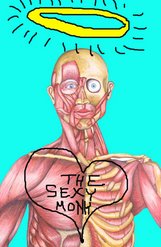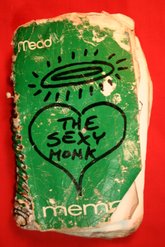
First, a quote from Michelangelo: "Painting and sculpture, labor and good faith have been my ruin and I continually go from bad to worse. Better would it have been for me if I had set myself to making matches in my youth. I should not be in such distress of mind." Every creative person has had thoughts like this at one time or another (or several times a day.) Why would a person of reasonable intelligence cut off all chances at a normal life and participate in an activity that takes up a large amount of time and energy, but brings in almost no money? This seems to defy all the core desires that we learn about in biology and sociology classes-food, sex, status, children, security. Vincent van Gogh is often sited as an example that artists do what they do what they do because they are crazy. Though he undoubtedly went insane during the last year or two of his life, van Gogh's writings about art and the creative process (found in the letters to his brother Theo) are among the most lucid on the subject. In her excellent novel "Oryx and Crake," Margaret Atwood has her character Crake make the case that an artist uses art to attract a mate in the same way that a peacock uses his tail. Anybody who has spent time doing something creative will know that this is bologna. I don't think your grandma sewed that crazy quilt because she was looking to get laid. There are lots of easier ways to get attention. As a person who looks for a scientific explanation for things, I am disappointed that creativity can't be codified or reliably enhanced. But as an artist, I am happy that there is still some mystery in the world. Recreational drugs often give the illusion of being in a creative whirlwind, but leave you too stupefied to record the resulting ideas. Plus, ideas that seem fantastic when you're flying high almost never work when you return to earth (unless you count "Lets get some more Doritos!" as a real brainwave.) The traditional healers that I lived and worked with in South Africa used the drugs available to them (hash and a vision inducing root called mthebula) very sparingly-maybe once or twice a year. When they did use them, it was usually because they had a specific question that they needed to meditate on and never as a social lubricant. Sadly, so many of the prescription drugs passed out freely to young adults in trouble by well meaning therapists serve to stifle creativity. I imagine contemporary versions of Leonardo da Vinci and Albert Einstein zonked out of their skulls watching "The Princess Bride" for the 257th time. What if researchers found that the same set of genes that allows someone to compose a symphony or paint a beautiful picture also increases the likelihood of a person becoming a rapist? Should that set of genes be suppressed or turned off? I don't know, but this may be a real option for potential parents in a generation or two. A few years ago, I spent 8 months taking part in several human dissections (Northwestern University in Chicago and Eastern Virginia Medical School in Norfolk, Virgina.) As part this process we had to remove the brain from the skull and examine it. Out of its protective environment, the brain resembles three pounds of spoiled cheese. Holding it in my hands, I remember thinking: "How could tofu cause so much trouble?" I had all of these thoughts and experiences rolling around in my head, when I went to South Africa in January of 2003. I was immediately attracted to the traditional healers that I met there, because of their openness and willingness to talk about their own lives and creative process. I had read in various art history classes about the close connection between the shaman and the artist-now, here they were! At the time, I was feeling very down about my own artwork, because I had spent a couple of years in graduate school getting my MFA. I am not cut out for the big egos and mind games that are part and parcel of an academic environment, and I was glad to grab my sheepskin and go. In contrast to most of the professors I worked with, the healers seemed confident about their status and clear about their beliefs and visions. My teacher and guide to African spirituality, Mma Seitsang described her physical reaction while having an ecstatic vision like this: " When I am full of the ancestors my ears feel as if they are full of water. I shout! YOOOOOO! I cry, even though I am not sad. I can jump right up to touch the sky. It is like someone is sticking me with so many pins. My mind is touched by the fire." I was shocked to hear her say this, because it is so much like the feelings that I have when I am really hot with an idea-like I have a burning stone in the middle of my forehead. It is a real high-a touch of true power and mystery. Amazing, not because it is rare, but because it is so common. And once you get a taste, its hard to go back. So, to return to the beginning, why didn't Michelangelo make matches for a living? He touched the real fire inside.



No comments:
Post a Comment